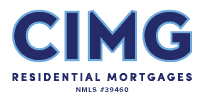For homeowners looking to build wealth, a home equity loan can be a powerful financial tool. With the equity in your home, you can access funds at relatively low interest rates and put that money to work in smart, strategic ways.
Should You Use Home Equity to Pay for College?
Higher education can be one of the most significant financial investments you’ll make, second only to purchasing a home. While federal loans are a common method for covering college costs, using your home’s equity is another option to consider.
Consolidate Credit Card Debt with a Cash-Out Refinance
If you’re feeling overwhelmed by credit card debt, a cash-out refinance may be an effective way to manage it. This type of mortgage allows you to utilize your home’s equity to pay off high-interest credit cards, consolidating them into a single, lower-interest mortgage payment.
How Much Equity Can You Borrow Today?
Your home equity represents one of your most valuable assets. When it comes to borrowing against that equity, many homeowners question how much can they borrow. Understanding the amount of equity you can tap into today is essential, especially if you’re considering a home equity loan or line of credit (HELOC) for major expenses like home improvements, debt consolidation, or other financial needs.
How to Unlock Your Home’s Equity with a Cash-Out Refinance
As a homeowner, you might be sitting on a valuable asset without even realizing it–your home equity. Tapping into this equity through a cash-out refinance can open up financial opportunities you hadn’t considered. Here’s how you can unlock your home’s equity with a cash-out refinance and what you need to know before diving in.

